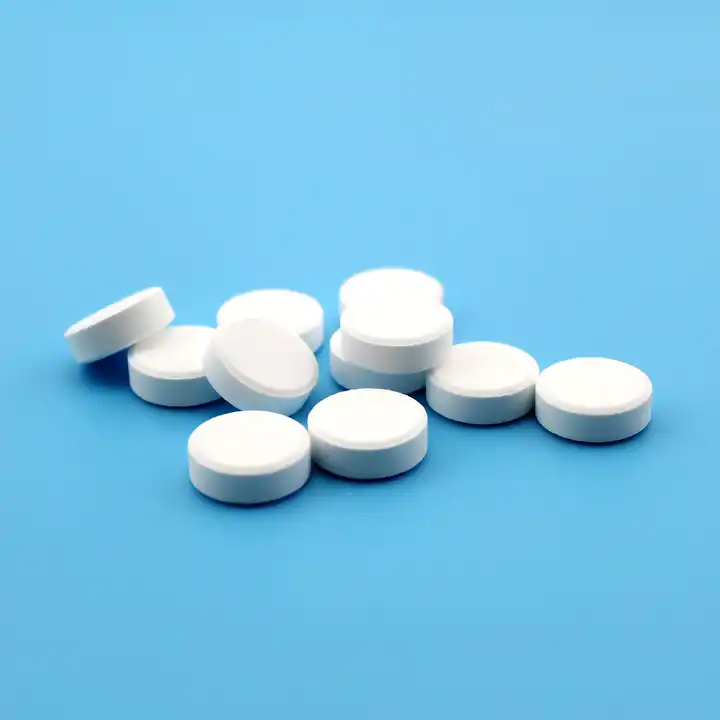Calcium Hypochlorite is recognized for its key role in water purification and disinfection, standing out in the field of environmental and personal hygiene management. This article aims to provide a comprehensive understanding of Calcium Hypochlorite, delving into its chemical properties, practical applications, and the subtle nuances of its use. From swimming pools to water treatment facilities, it explores the best practices for its safe and effective use.

Why Calcium Hypochlorite is Better than Sodium Hypochlorite
Chemical Properties Analysis
Calcium Hypochlorite Calcium hypochlorite contains a higher chlorine content, usually between 65%-70%. It is a solid powder that can dissolve quickly in water.
Sodium Hypochlorite Sodium hypochlorite is a liquid, typically with an effective chlorine content of about 5%-13%. It is relatively stable in storage and transportation but prone to decomposition under sunlight.
Efficiency and Stability Comparison
Efficiency Due to its higher chlorine content, calcium hypochlorite has a greater disinfection efficiency under the same volume or weight. It can rapidly release chlorine gas, effectively killing bacteria and viruses.
Stability As a solid, calcium hypochlorite is less dependent on temperature and light, making it more stable and less prone to decomposition. In contrast, sodium hypochlorite, being a liquid, is more likely to decompose under high temperatures or direct sunlight, reducing its effective components.
Advantages in Practical Applications
Storage and Transportation: Calcium hypochlorite exists in a solid form, making it more convenient for storage and transportation, especially suitable for long distances or extended periods.
Application Range: Calcium hypochlorite is not only suitable for water treatment but also for disinfection in various fields such as food processing, agriculture, and medical care.
Cost-Effectiveness: Although the initial cost of calcium hypochlorite might be higher than sodium hypochlorite, its higher effective chlorine content and better stability may make it more economical in the long run.
Differences Between Calcium Hypochlorite and Chlorine
Calcium Hypochlorite: A compound with the chemical formula Ca(ClO)_2, typically in a solid powder or granular form. It contains a higher proportion of effective chlorine, usually between 65%-70%.
Chlorine: An element with the chemical symbol Cl. Common forms of chlorine in disinfection and water treatment include gaseous chlorine and liquid chlorine (such as sodium hypochlorite solution).
Comparison of Chemical Structure and Properties
Chemical Structure: Calcium hypochlorite contains calcium and hypochlorite ions, while chlorine is a single element. When dissolved in water, calcium hypochlorite releases effective chlorine (including chloride ions and hypochlorous acid).
Properties: Calcium hypochlorite, as a solid, is easier to store and transport. Chlorine gas is corrosive and requires storage and use in a sealed environment. Calcium hypochlorite has a lower solubility in water, while chlorine gas or sodium hypochlorite solution dissolves easily in water.
Differences in Disinfection Effect
Calcium Hypochlorite: With high effective chlorine content, calcium hypochlorite is highly efficient in disinfection, quickly killing bacteria, viruses, and algae. It is suitable for rapid response and strong disinfection scenarios.
Chlorine: Gaseous chlorine or other forms of chlorine (such as sodium hypochlorite) are also effective in disinfection but may take longer to achieve the same disinfection effect. Chlorine gas requires stricter safety measures in handling.
Possibility of Replacing Chlorine with Calcium Hypochlorite
In Pools Calcium hypochlorite can fully replace chlorine for disinfection in swimming pools. In fact, due to its efficient disinfection ability and relative ease of storage and carriage, calcium hypochlorite is a very popular choice for pool disinfection. It can quickly raise the chlorine level in pool water, effectively controlling bacteria and viruses. However, when using calcium hypochlorite, it is necessary to strictly follow the recommended dosage to avoid overuse and ensure the safety and health of the pool water.
What Not to Mix with Calcium Hypochlorite Acidic Substances
Common Substances: Sulfuric acid, hydrochloric acid, nitric acid, etc. Possible Dangerous Reactions: When calcium hypochlorite reacts with acidic substances, it rapidly releases chlorine gas, a toxic gas that can cause respiratory irritation and harm. Preventive Measures: Store calcium hypochlorite and acidic substances separately and clearly labeled to avoid mixing.
Organic Substances
Common Substances: Petroleum products, solvents, urea, etc. Possible Dangerous Reactions: Mixing calcium hypochlorite with organic substances may cause burning or explosions. Preventive Measures: Avoid using calcium hypochlorite in areas or containers that contain organic substances.
Reducing Agents
Common Substances: Sulfur powder, iron powder, zinc powder, etc. Possible Dangerous Reactions: Mixing calcium hypochlorite with reducing agents can cause intense chemical reactions, potentially leading to fires or explosions. Preventive Measures: Check the environment for reducing agents before using calcium hypochlorite.
Ammonia or Ammonium Compounds
Common Substances: Ammonia water, urea, etc. Possible Dangerous Reactions: When mixed with ammonia, calcium hypochlorite generates chlorine gas and chloramines, both toxic gases. Preventive Measures: Ensure that there are no ammonia or related compounds present in the environment where calcium hypochlorite is used.
In summary, calcium hypochlorite is a powerful disinfectant, and the journey through its chemical properties, applications, and safety precautions highlights the importance of understanding such substances in depth. As we have seen, the effective use of calcium hypochlorite and its robust disinfecting properties can significantly contribute to maintaining hygiene and safety in numerous environments. A comprehensive understanding of calcium hypochlorite enables users to utilize this compound more effectively, ensuring both efficacy and safety in its application.